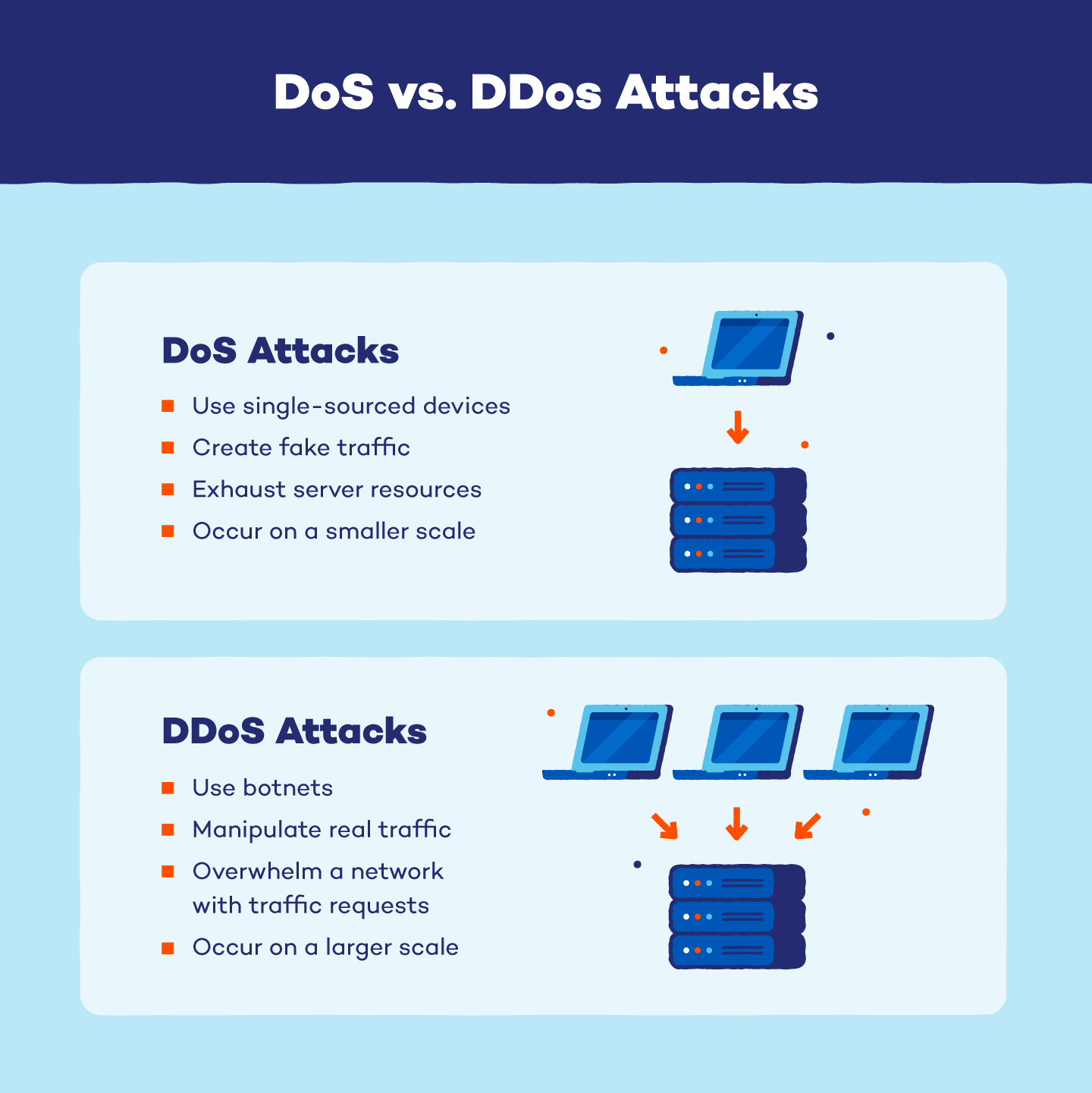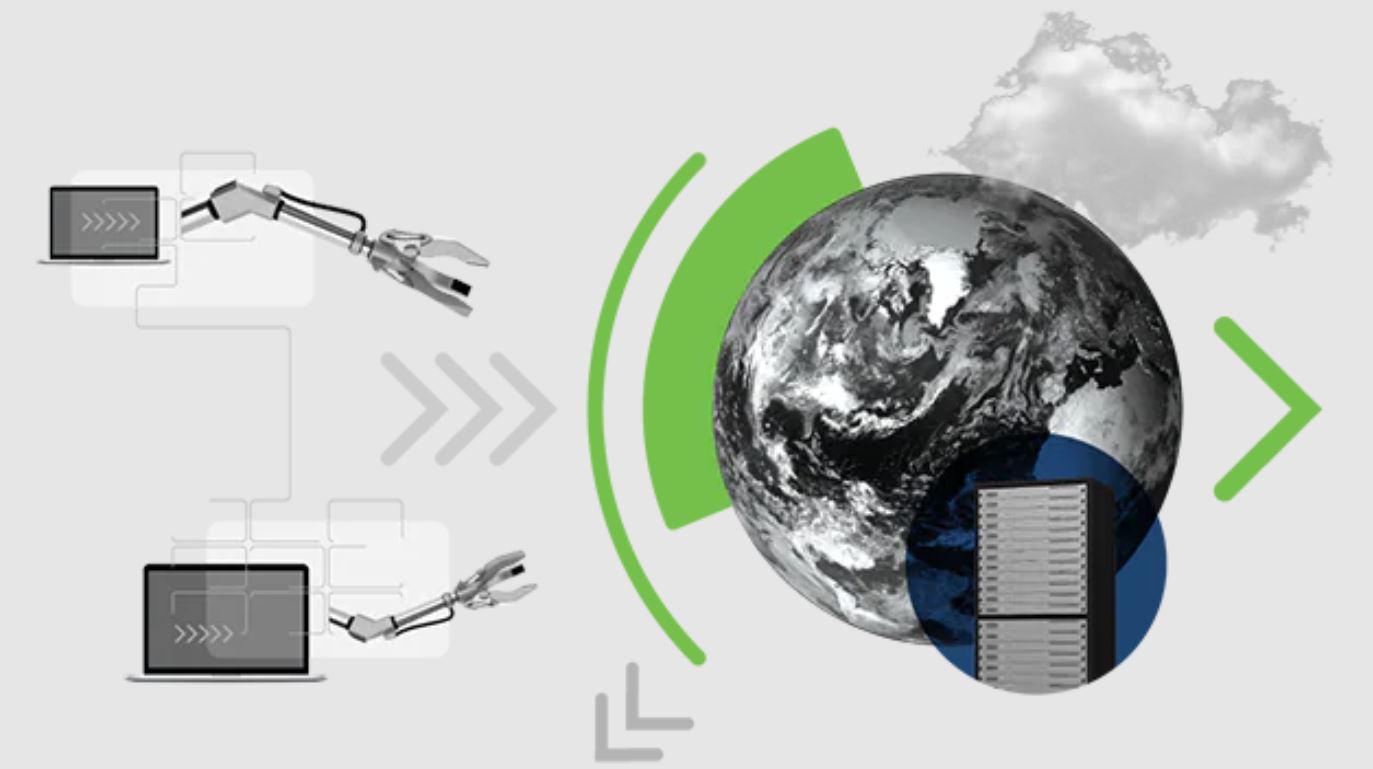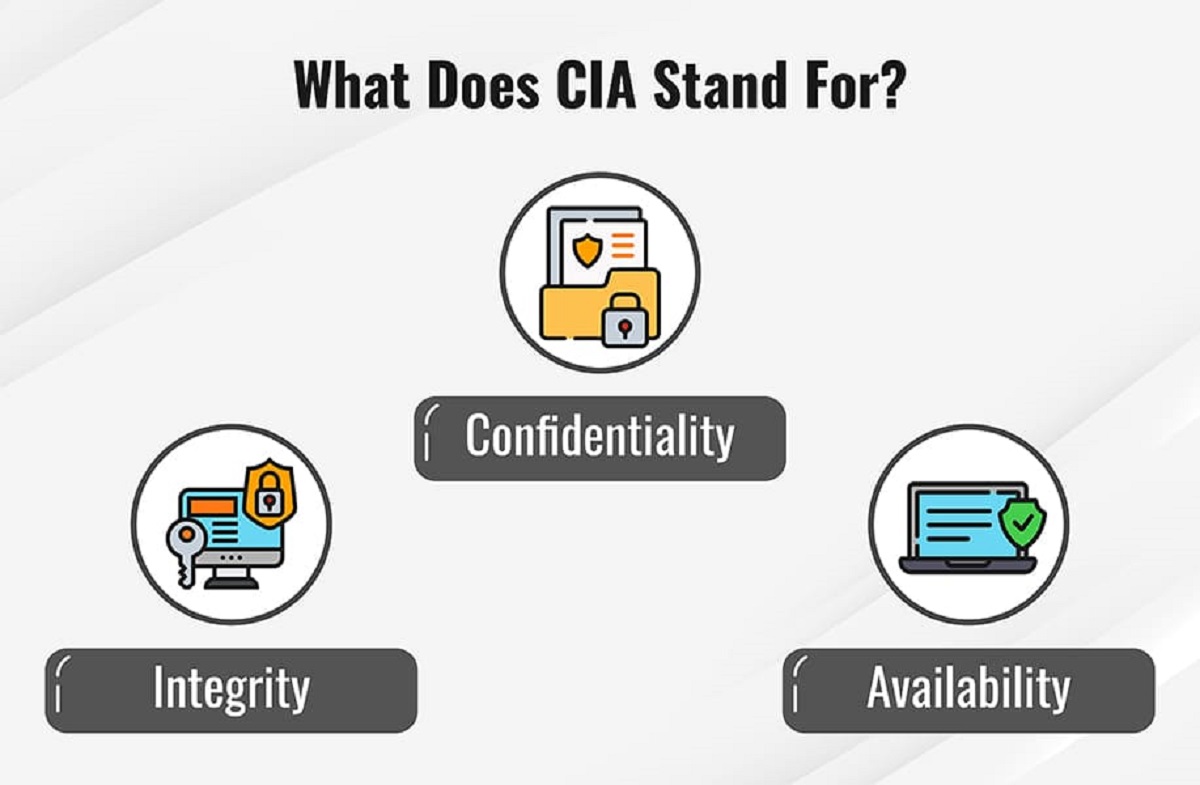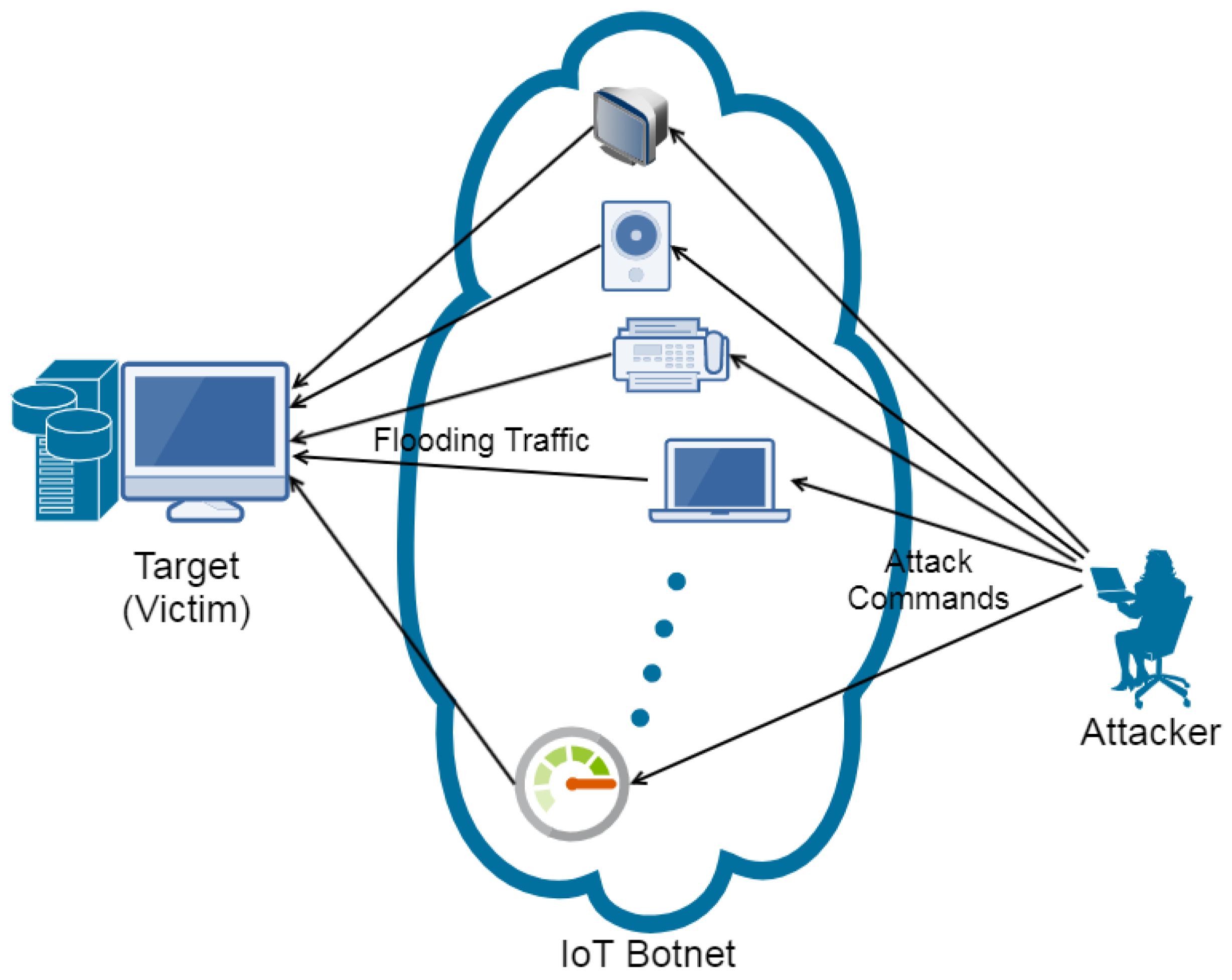Introduction
Welcome to the world of cybersecurity, where the ever-evolving digital landscape presents both opportunities and challenges. As technology advances, so do the threats that jeopardize the security and integrity of our online systems. One such threat is the Distributed Denial of Service (DDoS) attack, a malicious attempt to disrupt the availability, performance, scalability, and reputation of a targeted system.
In recent years, DDoS attacks have become increasingly prevalent, affecting organizations of all sizes and industries. From financial institutions to e-commerce websites, nobody is immune to the potential damage caused by these attacks. As a result, understanding the various aspects of DDoS attacks and their impact on cybersecurity has become paramount in the quest for effective defense and mitigation strategies.
In this article, we will delve into the different aspects of DDoS attacks and examine their effects on crucial elements of cybersecurity. We will explore how these attacks can significantly impact availability, network performance, scalability, and reputation. Additionally, we will discuss potential mitigation strategies to combat and minimize the damage caused by DDoS attacks.
As technology continues to advance and cybercriminals become increasingly sophisticated, it is essential for organizations and individuals to stay informed about the ever-evolving threat landscape. By gaining a deeper understanding of DDoS attacks and their consequences, we can fortify our cybersecurity defenses and minimize the potential damage inflicted by these malicious acts. So, let’s dive in and explore the world of DDoS attacks to safeguard our digital presence and ensure a secure online environment.
What is a Distributed Denial of Service (DDoS) Attack
A Distributed Denial of Service (DDoS) attack is a cyberattack aimed at disrupting the normal functioning of a targeted network, application, or website. Unlike a traditional Denial of Service (DoS) attack, which is launched from a single source, a DDoS attack is orchestrated using multiple computer systems, often forming a botnet, to overwhelm the targeted system with a flood of incoming traffic.
The primary objective of a DDoS attack is to deny legitimate users access to the targeted system by overloading its network infrastructure or consuming its computational resources. Attackers achieve this by using compromised devices, such as computers, smartphones, or Internet of Things (IoT) devices, to generate a massive volume of requests simultaneously.
DDoS attacks can be classified into different types based on the techniques and methods used. Some common types include:
- Volume-based attacks: These attacks aim to consume the bandwidth of the target by overwhelming it with a high volume of traffic. The attacker floods the target’s network with a deluge of data packets, rendering it unable to handle legitimate user requests.
- Protocol attacks: These attacks exploit vulnerabilities in network protocols to exhaust server resources. For example, the attacker may send a flood of SYN packets to initiate numerous half-open connections, depleting the server’s resources and impairing its functionality.
- Application layer attacks: These attacks target the specific application or service running on the target system. By exploiting vulnerabilities in the application layer, such as HTTP floods or Slowloris attacks, the attacker can exhaust server resources or render the application unresponsive.
DDoS attacks have evolved in sophistication and scale over the years, leveraging advancements in technology and the increasing number of interconnected devices. The motivation behind these attacks can vary, ranging from financial gain to revenge, political statements, or simply causing disruption for malicious intent.
Now that we understand what a DDoS attack entails, let’s explore the dangers these attacks pose and the impact they can have on various aspects of cybersecurity.
Why are DDoS Attacks Dangerous?
DDoS attacks pose a significant threat to the security and stability of online systems, making them extremely dangerous. Here are a few reasons why these attacks are a cause for concern:
1. Disruption of Services: DDoS attacks can bring down websites, halt critical online services, and disrupt normal business operations. This can lead to financial losses, damage to reputation, and diminished customer trust. The longer the attack lasts, the greater the impact on availability and customer satisfaction.
2. Financial Implications: Downtime resulting from a DDoS attack can result in significant financial losses for businesses. Organizations may lose revenue from online transactions, suffer from decreased productivity, and incur additional costs to remediate the attack and bolster their security infrastructure.
3. Damage to Reputation: A successful DDoS attack can tarnish an organization’s reputation. Customers may perceive the business as unreliable or insecure, leading to a loss of trust and potential customers seeking alternatives. Rebuilding trust and restoring the company’s reputation can be a lengthy and costly process.
4. Camouflage for Other Attacks: DDoS attacks are often used as diversionary tactics to mask other cyber attacks, such as data breaches or infiltration attempts. While the focus is on mitigating the DDoS attack, attackers can exploit system vulnerabilities, steal sensitive data, or gain unauthorized access to the network undetected.
5. Scalability Concerns: DDoS attacks can overwhelm network infrastructure, causing systems to become unresponsive or crash. As businesses scale and handle increasing amounts of traffic, their ability to handle DDoS attacks becomes crucial. Without effective mitigation strategies, organizations may struggle to maintain business continuity during these attacks.
6. Impact on Customer Experience: DDoS attacks don’t just disrupt services; they also directly impact the end-user experience. Slow-loading websites, unresponsive applications, and degraded performance frustrate users and drive them away. Losing customers due to poor user experience can have long-lasting consequences on a business’s growth and success.
Understanding the dangerous implications of DDoS attacks is essential for developing proactive defense strategies. In the next sections, we will examine the specific aspects of cybersecurity that are most affected by DDoS attacks, and explore mitigation techniques to protect against these threats.
The Impact of DDoS Attacks on Availability
One of the primary objectives of a Distributed Denial of Service (DDoS) attack is to disrupt the availability of a targeted system or service. Availability refers to the ability of users to access and use a system or service whenever needed. By overwhelming the targeted system’s network infrastructure or exhausting its resources, DDoS attacks can severely impact availability. Here are some key ways DDoS attacks affect availability:
1. Website Downtime: DDoS attacks can render websites and online services inaccessible, leading to prolonged periods of downtime. When a website or service is unreachable, users cannot access the information or perform desired actions, resulting in frustration and potential loss of customers.
2. Unresponsive Applications: DDoS attacks can overwhelm the application layer of a targeted system, rendering applications unresponsive or sluggish. This can prevent users from performing critical tasks, such as making online transactions or accessing important data, which ultimately hampers productivity and damages user experience.
3. Disrupted Business Operations: Organizations heavily reliant on online systems may experience significant disruptions in their day-to-day operations during a DDoS attack. Critical business processes, such as order processing, customer support, or inventory management, may come to a halt, impacting productivity and revenue generation.
4. Loss of Customers and Revenue: DDoS attacks that result in prolonged service outages can lead to dissatisfied customers seeking alternatives. When users are unable to access a system or service, they may turn to competitors, resulting in lost revenue and potential long-term customer loss.
5. Emergency Response Delays: In certain scenarios, DDoS attacks can impact emergency response systems, such as those used by healthcare or public safety organizations. Inability to access critical systems during emergency situations can delay response times and put lives at risk.
6. Impact on Third-Party Services: DDoS attacks on service providers or infrastructure providers can have a cascading effect on the availability of other dependent services. For example, if a cloud service provider is targeted, it can affect multiple businesses relying on that provider’s infrastructure, causing widespread disruption.
Ensuring availability is crucial for businesses and organizations that rely on their online presence to serve customers, generate revenue, and maintain productivity. Implementing robust DDoS mitigation strategies, such as traffic filtering, rate limiting, and load balancing, can help to minimize the impact of DDoS attacks on availability and maintain continuity of operations.
How DDoS Attacks Affect Network Performance
When it comes to Distributed Denial of Service (DDoS) attacks, the impact extends beyond just disrupting the availability of a targeted system. These attacks can significantly degrade network performance, hampering the efficiency and responsiveness of the entire network infrastructure. Here are some ways in which DDoS attacks affect network performance:
1. Bandwidth Saturation: DDoS attacks often involve overwhelming the target’s network with a massive volume of malicious traffic. This flood of incoming data consumes the available bandwidth, leaving little to no room for legitimate network traffic. As a result, network performance slows down, and users may experience delays, packet loss, and overall degraded connectivity.
2. Increased Latency: The volume of traffic generated by a DDoS attack can cause a significant increase in network latency. Latency refers to the delay between a request being sent and the corresponding response being received. Higher latency can lead to slower website loading times, delayed data transfers, and reduced overall network responsiveness.
3. Congestion and Collisions: DDoS attacks often flood networks with an overwhelming amount of packets. This can lead to congestion and network collisions, where multiple requests vie for limited network resources simultaneously. Congestion and collisions further impact network performance by causing delays, increased packet loss, and potential data corruption.
4. Saturation of Network Devices: DDoS attacks can specifically target network devices, such as routers, switches, or firewalls. By overwhelming these devices with a high volume of traffic or resource-intensive requests, attackers exhaust their processing capabilities. Overloaded devices unable to cope with the demand can become unresponsive or even crash, severely impacting network performance.
5. Disruption of Quality of Service (QoS): DDoS attacks can disrupt the prioritization mechanisms implemented by network administrators for Quality of Service (QoS). QoS mechanisms ensure that certain types of traffic, such as voice or critical applications, receive higher priority to maintain a certain level of performance. By overwhelming the network, DDoS attacks can undermine these mechanisms and affect the performance of prioritized traffic.
6. Impact on Network Monitoring and Management: DDoS attacks can also interfere with network monitoring and management systems, making it challenging to detect, analyze, and respond to network issues effectively. Attack traffic can flood monitoring tools, overwhelm logging systems, and manipulate traffic patterns, making it difficult to isolate and mitigate the attack in real-time.
Understanding how DDoS attacks affect network performance allows organizations to implement appropriate mitigation measures. These measures may include deploying traffic filtering mechanisms, optimizing network configurations, and utilizing traffic monitoring solutions to identify and mitigate DDoS attack traffic effectively.
Understanding the Impact of DDoS Attacks on Scalability
Distributed Denial of Service (DDoS) attacks not only disrupt the availability and hamper the performance of targeted systems but also have a significant impact on their scalability. Scalability refers to a system’s ability to handle an increasing amount of workload or users without compromising its performance or responsiveness. Here are some ways DDoS attacks affect scalability:
1. Overutilization of Resources: DDoS attacks generate a surge of traffic that overwhelms the targeted system’s resources, such as bandwidth, processing power, or memory. The excessive demand on resources can cause resource exhaustion and make it difficult for the system to handle additional workload, negatively impacting scalability.
2. Increased Response Time: When a system is under a DDoS attack, it may struggle to respond to legitimate user requests efficiently. This leads to increased response times, making the system appear slower and less responsive. As the workload increases, the system’s scalability diminishes, as it becomes unable to handle growing user demands in a timely manner.
3. Bottlenecks and Congestion: DDoS attacks can create bottlenecks and network congestion, restricting the flow of data and causing delays in processing and communication. As the network becomes saturated with attack traffic, the system experiences performance degradation, and its ability to scale to accommodate additional users or workload becomes limited.
4. Dependencies on Third-Party Services: Many online systems rely on third-party services, such as content delivery networks (CDNs), cloud providers, or DNS providers. DDoS attacks affecting these services can have a cascading effect on the targeted system’s scalability. If a third-party service is unable to scale and handle the increased traffic resulting from an attack, the targeted system may suffer from reduced scalability as it becomes dependent on the availability and scalability of the third-party service.
5. Impact on Load Balancing: Scalable systems often employ load balancing techniques to distribute traffic evenly across multiple servers or resources. However, DDoS attacks can disrupt the load balancing mechanisms, overwhelming individual resources and skewing the traffic distribution. This can lead to imbalanced server loads, decreased responsiveness, and diminished scalability.
6. Long-Term Scalability Concerns: DDoS attacks can have long-lasting impacts on system scalability. In addition to immediate disruption, the damage caused by an attack can persist, requiring time and effort to recover fully. This recovery process may involve reconfiguring network infrastructure, implementing enhanced security measures, or acquiring additional resources, delaying the system’s ability to scale and adapt to future growth effectively.
By understanding how DDoS attacks affect scalability, organizations can implement appropriate measures to mitigate the impact and ensure efficient operations even under attack conditions. These measures may include implementing robust resource allocation strategies, enhancing infrastructure scalability, leveraging cloud-based scaling solutions, and conducting regular capacity planning to anticipate potential scalability challenges.
The Implications of DDoS Attacks on Resource Utilization
When it comes to Distributed Denial of Service (DDoS) attacks, resource utilization becomes a critical concern. DDoS attacks specifically target the resources of a targeted system, such as network infrastructure, hardware, software, or computational power. Here are the implications of DDoS attacks on resource utilization:
1. Exhaustion of Bandwidth: DDoS attacks flood the targeted system with a massive volume of traffic, overwhelming available bandwidth. This can lead to the exhaustion of network resources, leaving little to no capacity for legitimate traffic. As a result, resource utilization becomes imbalanced, with the majority of resources dedicated to handling attack traffic.
2. High CPU and Memory Usage: DDoS attacks often involve sending a flood of requests or packets, which puts a strain on the targeted system’s CPU and memory. Processing these requests consumes CPU cycles, while buffering and managing the volume of incoming data consumes memory. High CPU and memory usage hampers resource utilization and diminishes performance for other critical tasks.
3. Increased Power Consumption: DDoS attacks can have a significant impact on power consumption. When a system experiences high resource utilization due to an attack, more power is required to maintain its normal operations. The excessive power consumption during DDoS attacks can result in increased electricity costs and strain on the power infrastructure.
4. Degraded System Performance: The resource-intensive nature of DDoS attacks can lead to degraded system performance. As resources are consumed by the attack traffic, there is less capacity available for legitimate user requests. This can result in slower response times, increased latency, and reduced system functionality, negatively affecting overall system performance.
5. Sluggish Network Resource Allocation: DDoS attacks disrupt the normal allocation of network resources. In order to prioritize dealing with the attack traffic, resources that would otherwise be available for legitimate traffic may be redirected or consolidated for handling the attack. This can result in suboptimal resource utilization and potential bottlenecks in the network.
6. Impact on Computational Capacity: DDoS attacks often target web servers or cloud-based resources that handle computational tasks. These attacks consume computational capacity, making it less available for executing legitimate operations. The heightened demand for computational resources can strain the system, leading to slower response times and decreased computational efficiency.
Resource utilization is a key consideration when defending against DDoS attacks. Implementing efficient resource management strategies, such as traffic filtering, load balancing, and resource scaling, can help to mitigate the impact of these attacks on resource utilization. Additionally, investing in robust monitoring systems and performing regular capacity planning can improve resource allocation and enhance overall system resilience.
Examining the Impact of DDoS Attacks on Reputation
One significant aspect of Distributed Denial of Service (DDoS) attacks that often goes beyond immediate technical implications is the impact on an organization’s reputation. DDoS attacks can have severe consequences for an organization’s image, brand, and overall reputation. Here are some key points to consider:
1. Loss of Customer Trust: DDoS attacks can erode customer trust in an organization’s ability to protect their data and provide reliable services. When a website or service is inaccessible due to an attack, customers may perceive the organization as unreliable or unsecure. This loss of trust can lead to customers seeking alternatives and a significant impact on the organization’s bottom line.
2. Negative Public Perception: News of a DDoS attack can spread quickly, drawing attention from media outlets and public attention. The perception of the organization as a victim of a successful attack can damage its reputation, especially if it is unable to handle or mitigate the attack effectively. Negative press and public perceptions can affect customer perception, investor confidence, and relationships with business partners.
3. Reputational Damage Control: Responding to a DDoS attack in a timely and transparent manner is crucial for mitigating reputational damage. Organizations that effectively communicate, provide updates, and take proactive measures to defend against attacks can demonstrate their commitment to protecting customers’ interests and regain some trust.
4. Impact on Brand Image: DDoS attacks can tarnish an organization’s brand image and values. Hacktivist groups or individuals carrying out DDoS attacks often have specific motives or political statements. If an organization is targeted due to controversial business practices or associations, its brand reputation may suffer long-term damage even after the attack is mitigated.
5. Customer Perception of Security: The occurrence of a successful DDoS attack can raise doubts among customers about the security measures implemented by an organization. Customers may question the organization’s ability to protect their personal information, leading to concerns about data breaches and further erosion of trust.
6. Investor Confidence: DDoS attacks can impact investor confidence in a company, particularly if its reputation and customer trust are significantly affected. Investors may question the organization’s ability to manage and respond to cyber threats, potentially leading to loss of investment or a decline in stock prices.
Organizations must be proactive in implementing robust security measures, including DDoS mitigation strategies, to protect their reputation and customer trust. Transparency, effective communication, and demonstrating resilience in the face of attacks are essential for minimizing reputational damage and maintaining a positive brand image.
Mitigation Strategies for DDoS Attacks
As the threat of Distributed Denial of Service (DDoS) attacks continues to grow, organizations must implement effective mitigation strategies to protect their systems and maintain business continuity. Here are some key mitigation strategies that can help defend against DDoS attacks:
1. DDoS Traffic Filtering: Implementing traffic filtering mechanisms can help identify and block malicious traffic associated with DDoS attacks. This can be achieved through techniques such as IP-based filtering, rate limiting, and deep packet inspection to identify and drop suspicious or malicious traffic before it reaches the target system.
2. Load Balancing: Load balancing distributes traffic across multiple servers or resources, preventing a single point of failure and enabling better resource utilization. Implementing load balancing mechanisms, such as using a load balancer or a Content Delivery Network (CDN), distributes the incoming traffic evenly and helps mitigate the impact of DDoS attacks.
3. Anomaly Detection: Monitoring network traffic and server behavior can help detect unusual patterns or anomalies that may indicate a DDoS attack. By leveraging anomaly detection systems, organizations can identify and respond to attacks in real-time, allowing for proactive mitigation measures before significant damage occurs.
4. Cloud-Based DDoS Protection: Utilizing cloud-based DDoS protection services can offer significant advantages in shielding against large-scale DDoS attacks. Cloud service providers have the infrastructure and expertise to absorb and mitigate enormous volumes of attack traffic, reducing the impact on the target system and ensuring availability for legitimate users.
5. Traffic Scrubbing: Traffic scrubbing services involve diverting incoming network traffic through a specialized cleaning infrastructure. This infrastructure filters out malicious traffic and forwards legitimate traffic to the target system. Traffic scrubbing services can effectively mitigate DDoS attacks, providing real-time protection and reducing the burden on the target’s infrastructure.
6. Collaboration and Information Sharing: Developing partnerships with other organizations and participating in information sharing initiatives can bolster defense against DDoS attacks. By sharing threat intelligence and collaborating on mitigation efforts, organizations can stay informed about emerging attack techniques and leverage collective knowledge to strengthen their defenses.
7. Incident Response Planning: Creating a comprehensive incident response plan specific to DDoS attacks is crucial for effective mitigation. This plan should outline roles, responsibilities, and communication channels during an attack. Regularly testing and updating the incident response plan ensures that organizations are well-prepared to respond swiftly and minimize the impact of an attack.
While it is impossible to completely eliminate the risk of DDoS attacks, implementing a combination of these mitigation strategies can significantly reduce their impact and improve an organization’s resilience. The key is to have a proactive approach, continuously monitor for potential threats, and be prepared to respond swiftly and effectively to mitigate the damage caused by DDoS attacks.
Conclusion
Distributed Denial of Service (DDoS) attacks pose a serious threat to organizations of all sizes and industries. These attacks can disrupt the availability, hamper network performance, impede scalability, deplete resource utilization, and damage an organization’s reputation. Understanding the various aspects of DDoS attacks and their implications is crucial for devising effective mitigation strategies.
Mitigating DDoS attacks requires a multi-faceted approach that combines technological solutions, proactive planning, and a strong incident response strategy. Implementing traffic filtering mechanisms, load balancing, and anomaly detection systems are essential for safeguarding against attacks. Leveraging cloud-based DDoS protection services and traffic scrubbing can provide effective defense against large-scale attacks.
Collaboration and information sharing with other organizations aid in identifying emerging threats and strengthening defenses. By fostering partnerships and staying informed, organizations can collectively combat the evolving tactics employed by attackers.
It is crucial to prioritize incident response planning and regularly test and update mitigation strategies to ensure a swift and effective response to DDoS attacks. Timely communication, transparency, and maintaining customer trust are key elements of effective reputation management during and after an attack.
Ultimately, defending against DDoS attacks requires a combination of technical measures, proactive planning, and adaptability. By staying vigilant, investing in robust defense mechanisms, and being prepared to respond promptly, organizations can minimize the impact of DDoS attacks, ensuring the availability, performance, and continuity of their systems and services in the face of cyber threats.

























